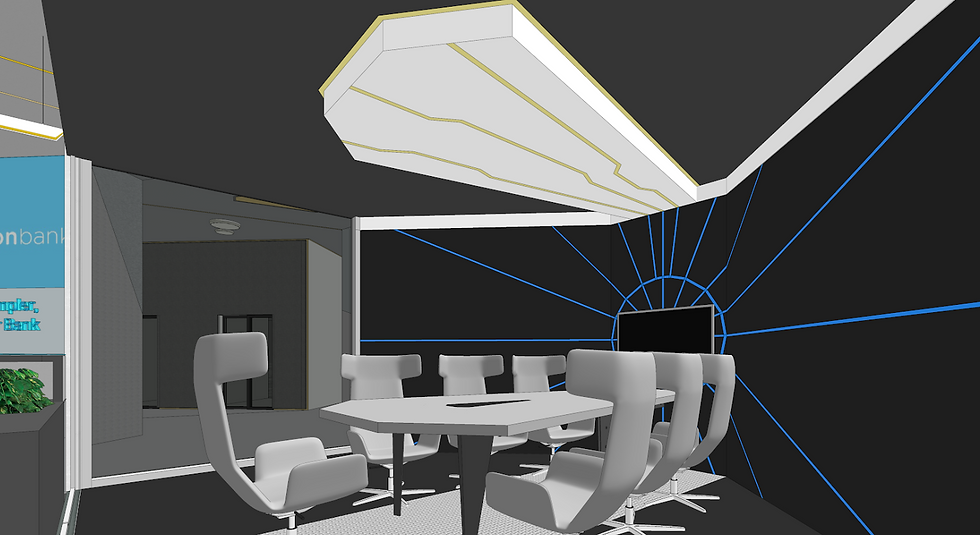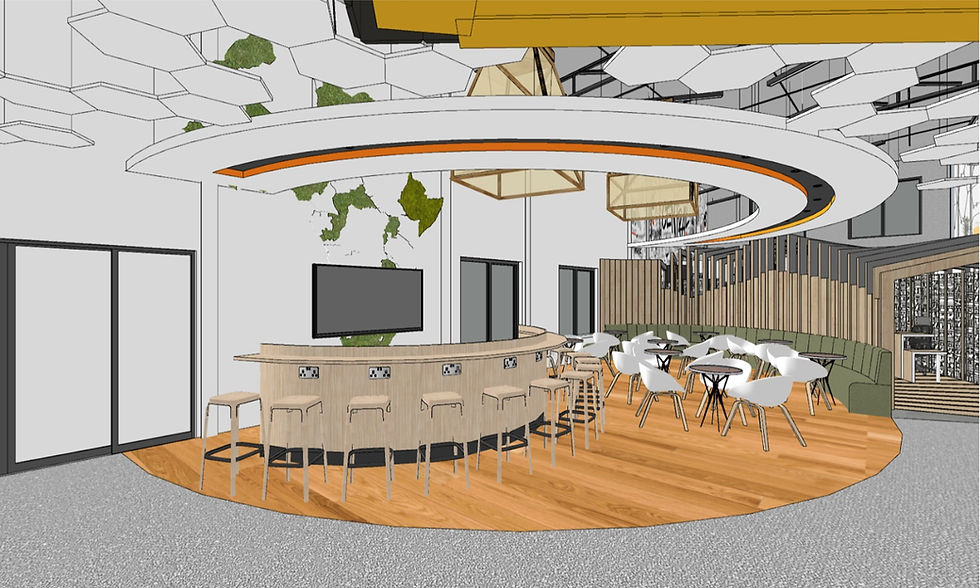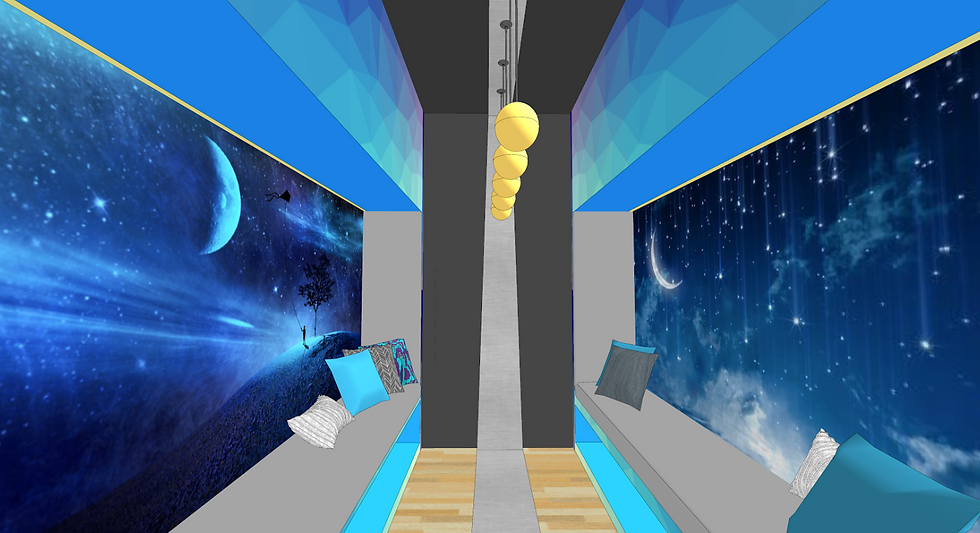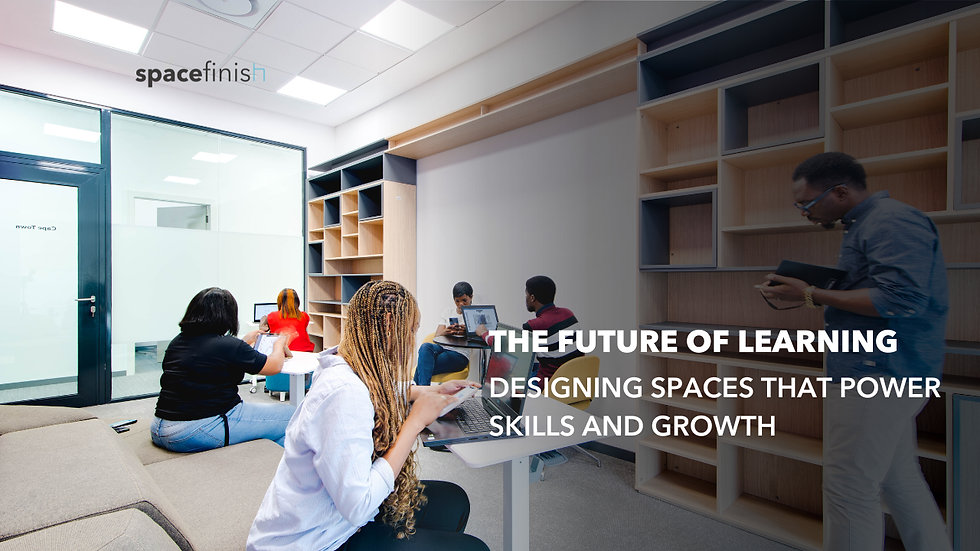Interactive Design Elements and How They Amplify your Productivity in the Workspace
- Stephen Ogundele
- Oct 4, 2022
- 3 min read

People productivity is one of the driving forces that determine how successful a company would be. It is the evaluation of how much work can be achieved over a period of time or a particular task.
The future of work is changing constantly with more companies adopting hybrid work-mode and rethinking their workspaces. Ensuring that your employee remains productive at all times sometimes relies on how they interact with the space they work in. What does this mean? The use of interactive design elements around the workspace allows employees to be engaged while working to bring the vision of the company to life.
Interestingly, at Spacefinish we ensure that our client's workspaces incorporate interactive elements that fade away static work environments. We’ll show you how interactive design elements can be used in the workspace to drive collaboration between teams.
What are Interactive Elements at a Workspace?
Interactive elements are usually whatever a user can interact with in a workspace. They turn uninterested or passive users to engage more meaningfully with a particular activity or function. Interactive design elements in the workplace could be tangible and intangible constituents that boost the workflow rate.
For an interactive workspace to exist there has to be the notion of interactive interior design. Interactive interior design refers to the development of interactive elements within the built space. Sometimes, it is the use of new technology such as augmented reality, touch screens, sensor-driven lighting, and more.

We proposed a façade building to suit one of our clients' brand statements. Designed to represent a tech-driven space, that is bold, and elegant, engaging users with the use of interactive and dynamic QR codes while in-premise. With our proposed facade, our client is able to engage customers through its digital channels like websites, ads, etc using QR codes. The building facade is also designed to adapt to changes during the day or night.
Therefore, an interactive workplace is a space that’s designed primarily to promote productivity, efficiency, and activity-based work.
Driving Activity-Based Work with Interactive Design Elements
Activity-based work is a different type of approach to work, where employees have a variety of different workspaces that are related to the tasks they need to achieve during the day. This is where we find spaces like smart conference rooms, calm zones, informal meeting rooms, café-style rooms, flexible furniture, etc.

Called the “Galactia’ room and located at the Union Bank innovation lab, SpaceNXT possesses an ideal example of what a smart conference room should look like. It was designed with the need of employees in mind and with an understanding of the hybrid workforce.
Smart rooms are the future solutions to the hybrid work environment, an ideal smart room contains elements like video conferencing software, whiteboard tools, productivity tools, visual occupancy, and booking time which lets you know when it’s in use by another team.

A Café-style room also engages your space with some activity-based work as employees feel more relaxed while working. Just like the Google Innovation Lab, we designed a work cafe where workers can combine snack time with team meet-ups has proven to support the workflow structure and enable teammates to bond better.
Providing dynamic flexible furniture(s) into spaces does wonders for productiveness, as they are custom-made movable objects for employees putting their needs first while they get the work done.

Even heroes need to rest their heads, calm zones are quiet nooks in the workplace that are created to foster rest areas that give workers an opportunity to recuperate and reenergize enough to continue work.
This nap room we created at the SpaceNXT, is installed with a motion sensor that triggers a response when movement is detected. Calm zones such as this, create an environment of people-first, allowing employees to perform better.
If you’re interested in how activity-based work elements can be incorporated into your workspace, please contact us.



Comments